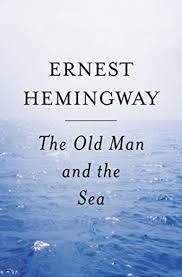-->
AIM-9 Sidewinder missile fired from an F/A-18C
My
job in the Air Force was Aging and Surveillance Testing of missiles--everything
from the AIM-9 Sidewinder air-to-air missile all the way up to the Minuteman
ICBM.
In
my Air Force service between 1972 and 75, I never got closer to Viet Nam than
the western desert of Utah, but test firing missiles can be dangerous. My first brush with missile-induced death
only caused minor, temporary hair loss. The
second was a lot worse, but more on that later.
On a
warm, spring Friday in 1973, we were scheduled to fire 20 AIM-9 Sidewinder
missiles in a test stand. The missile
test area was in the northwest corner of Hill Air Force Base, three miles from
main base and the airfield. It was also out of the flight path of the two
runways, since we could occasionally send up clouds of smoke from test firings
that changed from burn to explosion.
Today was one of those days.
Weeks
before the test, we received a shipment of AIM-9s randomly selected by lot
number. We then froze the missiles in a
large freezer. We shook them on a vibration table that was a huge 300,000-Watt
speaker driver. We simulated various
stratospheric heights in the altitude chamber, then finally took the stressed
missiles, bolted them to a test stand, attached accelerometers, and fired them.
On a
good day we could fire one every ten minutes, allowing for burn time and time
for the spent missile and for spinning the big screws that locked the missile into
the test stand. By the time of this test, I had been on the fire crew of
several batches of AIM-9s.
The
crew leader was Staff Sergeant John Pachuca.
He would retire the following year with 20 years of service. Hill was
his only duty station in more than a decade. In the 60s, missile testing
consolidated at Hill. Several other sergeants planned on retiring at Hill. But this stable environment also meant that
promotions were few and far between, so Big John Pachuca would retire a staff
sergeant. Before he retired, my muscular Mexican-American crew chief would save
my life.
After
each missile was fired, we counted to ten in a ditch several yards away from
the concrete test stand. I waited in the trench till the noise stopped, and
then vaulted the wall to switch the missile. Two of us ran to the stand and
unscrewed the clamps while two more grabbed the next missile. We used asbestos gloves to carry away the
casing of the spent missile.
The
stand was covered with a shelter made from perforated steel planking or PSP.
They were more the sheets were ten feet long, fifteen inches wide and weighed
more 66 pounds. They were designed to be temporary runways during World War II,
but were also great as temporary roadways or to make a cover that allowed smoke
to blow through. PSP sheets are full of holes.
Since
it was Friday, we all wanted to get done, so we sprinted to get the fired
missile out of the stand and the next missile locked in. When a missile fires, it roars for several
seconds then the sound dies away. Each missile has a unique burn time and part
of the test was recording that burn time.
Burn time was not my part of the test. The test went well in the
morning, but after lunch a few glitches with electronic equipment slowed us
down. We wanted to get done and have a weekend off, so we moved as fast as we
could bolting the missiles to the stand, then removing the fired missile. After three firings in the afternoon we had a
rhythm again. The fourth missile fired
and burned, but the burn time was about two seconds too short. I started to vault the wall then suddenly
flipped backwards. I thought the top of my head was being torn off.
I
started yelling with pain and swinging wildly. I shut up when I saw the flash
of the entire test pad blowing apart. I
looked up and saw a sheet of PSP fly over the ditch we were in. If I had been
standing above the ditch, the ten-foot steel sheet would have cut me in
half. John Pachuca had grabbed my by the
hair—which was three inches long and barely in Air Force regulations—and thrown
me back in the ditch. He knew the burn was too short and heard the sputter
before the missile exploded.
Inside
the missile, the propellant cracked during the freezing and shaking. The air
gap caused the propellant to stop burning, but then heat in the casing caused
the remaining propellant to heat and sizzle.
Then
the AIM9 blew up on the pad.
I
was lying on back in the ditch with the big sergeant in the white overalls on
top of me. My head hurt for days. Until
sundown and much of the next day we cleaned up what we could of the mess. Engineering
teams had to rebuild the test stand. We
continued the test the following week.
The test site had another pad because when missiles go high order they
blow up everything around them.
The
next time a missile test went wrong I wasn’t so lucky.




No comments:
Post a Comment